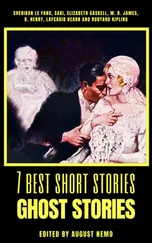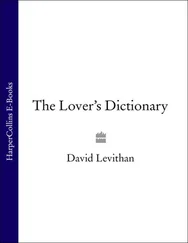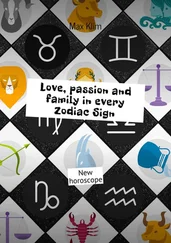Wallace was not under the illusion that his investigation would change anyone’s behavior (it did not change his own — at the festival one evening, Green remembers, he enjoyed two lobsters for dinner), but there was pleasure in and of itself in expanding the fight against American complacency.
In general, Pomona had a mellowing effect on Wallace. In September 2002, for instance, he had gone east for the New Yorker festival. He was to read alongside Franzen, and the two, who had never shared a stage before, jockeyed for the order, with Wallace feigning not to know that the second reader had the more prestigious slot. For Franzen, it was a microcosm of something that always bothered him in their friendship: Wallace didn’t like acknowledging how competitive they were. In the end, Wallace went first in the heat and read two sections of his long, unfinished novel. One was about Leonard Stecyk, the smarmy young man whose desire to behave perfectly with everyone leads to a wedgie in school (he grows up to be an IRS agent), 2and the other was a Kafkaesque story about an implacable infant who turns up in an agency office and drives the examiners crazy. “My audit group’s Group Manager and his wife have an infant,” the narrator, an unnamed auditor, recounts, “I can describe only as— fierce. Its expression is fierce; its demeanor is fierce; its gaze over bottle or pacifier or finger — fierce, intimidating, aggressive.” 3The crowd was highly appreciative; Wallace had brought a towel for his own perspiration and was happy to see his friend also sweating. “I…did not think he could,” he wrote DeLillo afterward. But, graciously, Franzen had spared him the news that the author they both most admired was himself in the audience. “He’s kind in his way,” Wallace acknowledged afterward of his friend. 4

Wallace had had three significant projects to work on as he settled in at Pomona: the ever-present Long Thing, a new story collection he had proposed to Pietsch, and a round of editorial queries on his book on Cantor and set theory. On the math book, he had pushed himself hard in the spring of 2002, his last semester in Bloomington, devoting almost all his time to it and getting a draft in just before leaving. Characteristically, the project had gone from a dare (“I’m doing a book about math!” he’d written Moore. “You?”) to a task (to DeLillo, just before moving to Pomona, he called it his “wretched math book”). But all the same, after a lot of effort he felt he had done good work and struck a balance between the biographical and the mathematical. He had hired a University of Illinois graduate student to go over the equations and technical details to make sure they were accurate too. But in September 2002, he wrote DeLillo in frustration that what had seemed done was not. “Both the math-editor and the general editor want repairs,” he complained. A book he had thought would take him four months of part-time work had now taken eleven of nearly full-time work. “I never want to see another Fourier series as long as I live,” he added, pride peeking out from beneath the irritation. And the copyedit was living up to his nightmares. Nine months later he was back to DeLillo with this new complaint: “The galleys for this blasted math book were such a mess that they’re having to typeset the whole thing over.” When the publisher asked for a small essay for its catalog on how he had come to write the book, Wallace responded with a meta-refusal:
The obvious objection to such promotional ¶s is that if the booklets are any good at all…blurblets are unnecessary; whereas, if the booklets aren’t any good, it’s hard to see how my telling somebody that as a child I used to cook up what amounted to simplistic versions of Zeno’s Dichotomy 5and ruminate on them until I literally made myself sick, or that I once almost flunked a basic calc course and have seethed with dislike for conventional higher-math education ever since, or that the ontology and grammar of abstractions have always struck me as one of the most breathtaking problems in human consciousness — how any such stuff will help.
Wallace’s publisher printed the disclaimer. It also asked another mathematician to review the manuscript. He expressed serious reservations and pointed to errors, some small, some larger, in it. Much as during his time at Harvard, Wallace was beginning to wonder if he had gotten into deeper water than he had realized.
Everything and More was finally published in October 2003. In the book Wallace covered the history of infinity as a philosophical and mathematical concept, beginning with Zeno’s dichotomy and moving through calculus and axiomatic set theory, the idea that all of mathematics is derivable from a handful of simple axioms, and on to Cantor. Cantor had suffered from severe mental illness; Wallace took pains to point out that the mathematician’s willingness to delve deep into questions of recursion and paradox was not the cause. “The real irony is that the view of ∞ as some forbidden zone or road to insanity — which view was very old and powerful and haunted math for 2000+ years — is precisely what Cantor’s own work overturned,” he wrote. He noted:
In modern medical terms, it’s fairly clear that G.F.L.P. Cantor suffered from manic-depressive illness at a time when nobody knew what this was, and that his polar cycles were aggravated by professional stresses and disappointments, of which Cantor had more than his share. Of course, this makes for less interesting flap copy than Genius Driven Mad By Attempts To Grapple With ∞. The truth, though, is that Cantor’s work and its context are so totally interesting and beautiful that there’s no need for breathless Prometheusizing of the poor guy’s life…. Saying that ∞ drove Cantor mad is sort of like mourning St. George’s loss to the dragon: it’s not only wrong but insulting.
Wallace had written Everything and More in a slightly different voice than usual, that of an amateur delighting in his subject and eager to communicate his enthusiasm, Cavell on holiday. He adduced a made-up high school math teacher, Dr. Goris, as his guide and threw in his customary mixture of high and low vocabulary, as well as a lot of math notations. He hoped that the playful tone of the book would help critics and professionals identify Everything and More as the college bull session it was meant to be. A few were charmed. The distinguished math writer John Allen Paulos in the American Scholar praised Wallace’s “refreshingly conversational style as well as a surprisingly authoritative command of mathematics,” but many felt otherwise. One, a philosopher of mathematics, writing in the New York Times Book Review , thought the book suffered from some of the same flaws as Infinite Jest : “One wonders exactly whom Wallace thinks he is writing for,” noted David Papineau of King’s College, London. “If he had cut out some of the details, and told us rather less than he knows, he could have reached a lot more readers.” Papineau was kinder than some of the other experts. Science wrote of the book that “mathematicians will view it with at best sardonic amusement. Crippling errors abound.” The magazine’s reviewer, Rudy Rucker, who had given Broom a glowing notice in the Washington Post in 1987, went on to enumerate a host of technical errors: providing the wrong definition of uniform convergence, botching the crucial Zermelo-Fraenkel axioms that form the basis of much of set theory, and conflating Cantor’s continuum problem with his continuum hypothesis. Wallace-l, an electronic mailing list devoted to Wallace’s work, became a repository for suggested corrections by various professional mathematicians. Wallace’s publisher now asked one of the list’s contributors, Prabhakar Ragde of the University of Waterloo, Ontario, to re-review the book before paperback publication. He sent back a three-page memo. Some of his suggestions Wallace took, but he also finally cried enough: there was a distinction between trying to write for general readers and specialists. “Dr. Ragde, who is clearly one sharp hombre,” he wrote the editors, “has nailed many of the book’s crudities — it’s just there are lots of crudities that I decided were more perspicuous for lay-reader purposes.” The book became one of the publisher’s bestselling titles all the same, on the strength of Wallace’s name and its engaging style, though he always had the disquieting feeling that he had been mugged for trespassing.
Читать дальше













